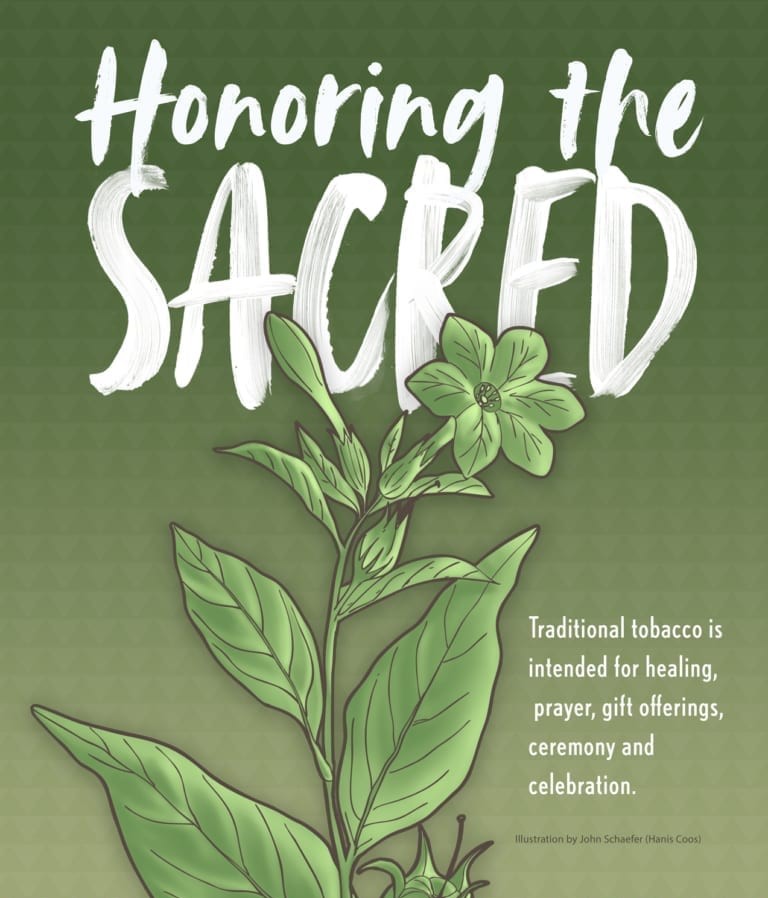Commercial Tobacco Prevention and Control
The tobacco prevention and control project focus on policy development, tobacco cessation and prevention by using culture as a prevention and education. Building and strengthening tribal capacity, developing culturally responsive/appropriate strategies and program opportunities, and providing education about the effective tobacco control measure. Are area of health promotion that is funded out of the Good health and Wellness in Indian Country (GHWIC) program. The GHWIC program is funded by CDC’s investment to improve tribal health. CDC reports that American Indian/Alaska Natives have the highest prevalence of cigarette smoking compared to all other racial/ethnic groups in the United States commercial smoking rates remain higher than 50% while recent studies share that the overall smoking rates have dropped to 14%. Traditional tobacco has a cultural and spiritual importance to tribal people and in the Northwest region (Idaho, Oregon, and Washington) it has been used in our tribal communities or traditional ceremonies or for medicinal purposes. The use of traditional tobacco various from tribe to tribe. The Northwest Portland Area Indian Health Board supports this work by providing trainings, technical assistance, and meeting facilitation to the NW tribes.
Training, technical assistance, and meeting examples:
- Tobacco 101
- Traditional tobacco
- Tobacco Cessation training
- Tobacco policy implementation
- E-cigarettes, vaping
- Quit kits Technical Assistant
- Policy Development
- Program Planning
- Clinical program evaluation and assessments
- Media/Messaging/CampaignMeetings
- Grantee
- Tribal Site Visits
Project Focus

About Commercial Tobacco
- American Indian and Alaska Natives (AI/AN) face many health challenges as reflected in their higher rates of risky health behaviors, poorer health status and health conditions, and lower utilization of health services (Benowitz, Blum, Braithwaite & Castro, 2014: Cobb et, 2014, CDC, 2013).In 2016, the smoking rates among AI? AN adults were the highest of any racial/ethnic group in the United States (CDC, 2016).Exposure to secondhand smoke Health Effects in Children. In children, secondhand smoke causes the following:
- ear infections
- More frequent and severe asthmas attacks
- Respitory symptoms (for example, coughing, sneezing and shortness of breath)
- Respiratory infections (bronchitis and pneumonia)
- A greater risk for sudden infant death syndrome (SIDS)
- Secondhand smoke can infiltrate into other units through hallways and stairwells.
- Health Effects in Adults In adults who have never smoked, secondhand smoke can cause:
- Heart disease (It is estimated that secondhand smoke caused nearly 34,000 heart disease deaths each year during 2005–2009 among adult nonsmokers in the United States.)
- Lung Cancer (Secondhand smoke exposure caused more than 7,300 lung cancer deaths each year during 2005-2009 among adult nonsmokers in the United States)
- Stroke
For More Information Click Here and view studies of secondhand smoke by the cdc
Commercial Tobacco and Policy
- Commercial tobacco use is a leading cause of preventable illness and deathin the U.S., especially wn Native communities.AI/AN death rates, ranks and rates of the leading causes of death compared to with Whites
- Health Effects in Children In children, secondhand smoke causes the following:
- Implementing Commercial Smoke Free policies